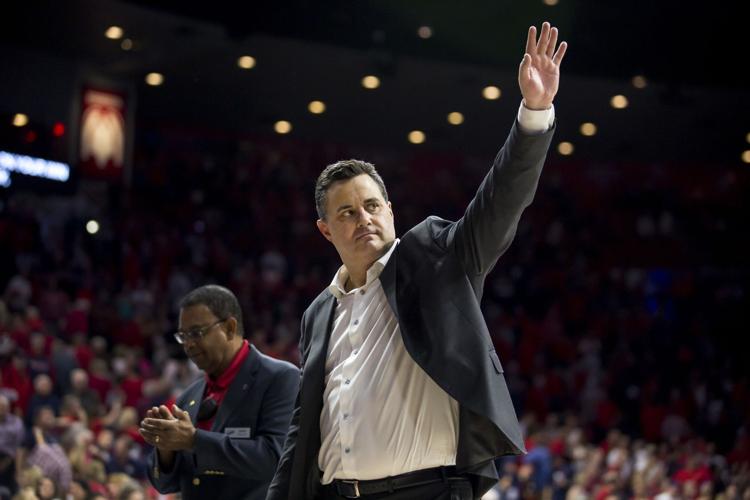Arizona fans buy over $7 million worth of men’s basketball tickets every season, and you could argue their value goes far beyond that.
After all, during the past 36 straight seasons in which the Wildcats have led the Pac-12 in attendance, they also have won or shared 15 conference regular-season championships.
Fans matter, a lot. Shouting, clapping, standing, jumping crowds — dressed mostly in red — matter at Arizona.
How many times have the Wildcats been down in the second half of a home game, only to rally when their five-figure crowds stood up and cheered them on to a win?
How many times have they responded with ear-splitting cries to a Nick Johnson or Rawle Alkins dunk, to a Derrick Williams block, to a T.J. McConnell floor dive?
How many times has UA coach Sean Miller grabbed the McKale Center microphone to thank fans, or begun his postgame news conference by doing so through the media?
None of that happens this season, at least until January. That’s when the Pac-12 says it may reevaluate keeping fans from campus events because of COVID-19 concerns.
“You think about that: To take fan base and crowd away from us — and take the actual game day away from them — it’s a tough one,” Miller said. “That, more than anything, will be the biggest change for all of us.”
Colorado coach Tad Boyle, whose team has also benefited from stuffing rowdy fans into its mile-high arena, says games this season could be like holding the private preseason scrimmages in which neither fans nor media is allowed.
“It’s gonna even the playing field,” Boyle says. “You have to create your own energy.”
Behind Arizona, which averaged 13,654 fans per game last season, was Utah (10,561) and ASU was (9,251). Washington was fourth at 8,481, and Oregon fifth at 8,038.
Most of those teams regularly finish in the upper half of the conference, too.

Sean Miller thanked fans, UA staffers and families in a statement posted to Twitter on Thursday.
“College basketball is a home-court sport,” Oregon coach Dana Altman said. “The percentages bear that out. It will be different.
“I wish I had (former Ducks standout) Dillon Brooks because he provided his own energy, and we’re gonna have to have that. You have to have guys on the team that do that. It can’t be coaches. That energy has to come from within, from guys who are physical, vocal.”
Utah coach Larry Krystkowiak said it might help to take a page out of the NBA’s playbook, where even in the Disney bubble last summer players tried to make the most of it.
“I know the Lakers created a lot of energy on their bench,” Krystkowiak said. “Some teams need the energy from a crowd and I think this is gonna separate the contenders from pretenders.”
If anyone has an home-court advantage this season, maybe it’ll be the teams who are already used to creating their own energy, who rarely draw big, supportive crowds. Or the ones who require their opponents to make a long, exhausting trip.
If so, watch out for the Washington State Cougars.
Located in remote Pullman, Washington, the Cougs averaged a league-worst 3,165 fans over 17 games last season despite improvement under first-year coach Kyle Smith.
“We definitely have gotten used to playing with less of a crowd,” WSU guard Isaac Bonton said during Pac-12 media day earlier this month. “I don’t feel like it’s too much of an advantage but we definitely have had situations where we have to bring on energy.”
While Bonton became used to playing before small crowds last season, he said the Cougars also have a lot of new guys this season that haven’t been through it yet.
“That’s gonna be the focus all year,” Bonton said. “That’s going to be a big challenge for everybody, but I feel like the guys who want it are gonna be able to do that, and I think we really want it.”
Whether the Wildcats want it enough, they’ll start finding out this weekend, with scheduled games against Grambling State on Friday and UTEP on Sunday.
If they, or anyone else for that matter, can get there in the first place. Arizona’s would-be opener with NAU for Wednesday was canceled, along with openers for Utah and Stanford, while Oregon State pivoted to a non-conference game against Cal on Wednesday after Colorado State backed out of OSU’s multi-team event.
“I don’t know if there will be a home court advantage at all, other than maybe the lack of travel,” Miller said. “It’s something that I don’t think any of us are really looking forward to, but these are our circumstances and we have to be ready.”






